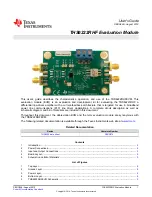
http://www.TYAN.com
65
BIOS (Basic Input/Output System):
the program that resides in the ROM chip, which
provides the basic instructions for controlling your computer’s hardware. Both the
operating system and application sof tware use BIOS routines to ensure compatibility.
Buffer:
a portion of RAM which is used to temporarily store data; usually from an
application though it is also used when printing and in most keyboard drivers. The CPU
can manipulate data in a buffer before copying it to a disk drive. While this improves
system performance (reading to or writing from a disk drive a single time is much faster
than doing so repeatedly) there is the possibility of losing your data should the system
crash. Information in a buffer is temporarily stored, not permanently saved.
Bus:
a data pathway. The term is used especially to refer to the connection between the
processor and system memory, and between the processor and PCI or ISA local buses.
Bus mastering:
allows peripheral devices and IDEs to access the system memory
without going through the CPU (similar to DMA channels).
Cache:
a temporary storage area for data that will be needed often by an application.
Using a cache lowers data access times since the information is stored in SRAM instead
of slower DRAM. Note that the cache is also much smaller than your regular memory: a
typical cache size is 512KB, while you may have as much as 4GB of regular memory.
Closed and open jumpers:
jumpers and jumper pins are active when they are “on” or
“closed”, and inactive when they are “off” or “open”.
CMOS (Complementary Metal-Oxide Semiconductors):
chips that hold the basic
startup information for the BIOS.
COM port:
another name for the serial port, which is called as such because it transmits
the eight bits of a byte of data along one wire, and receives data on another single wire
(that is, the data is transmitted in serial form, one bit after another). Parallel ports transmit
the bits of a byte on eight different wires at the same time (that is, in parallel form, eight
bits at the same time).
DDR (Double Data Rate):
a technology designed to double the clock speed of the
memory. It activates output on both the rising and falling edge of the system clock rather
than on just the rising edge, potentially doubling output.
DIMM (Dual In-line Memory Module):
faster and more capacious form of RAM than
SIMMs, and do not need to be installed in pairs.
DIMM bank:
sometimes called DIMM socket because the physical slot and the logical unit
are the same. That is, one DIMM module fits into one DIMM socket, which is capable of
acting as a memory bank.
DMA (Direct Memory Access):
channels that are similar to IRQs. DMA channels allow
hardware devices (like soundcards or keyboards) to access the main memory without
involving the CPU. This frees up CPU resources for other tasks. As with IRQs, it is vital
that you do not double up devices on a single line. Plug-n-Play devices will take care of
this for you.
Содержание S2875
Страница 73: ...http www TYAN com 73 Document D1558 100 ...








































